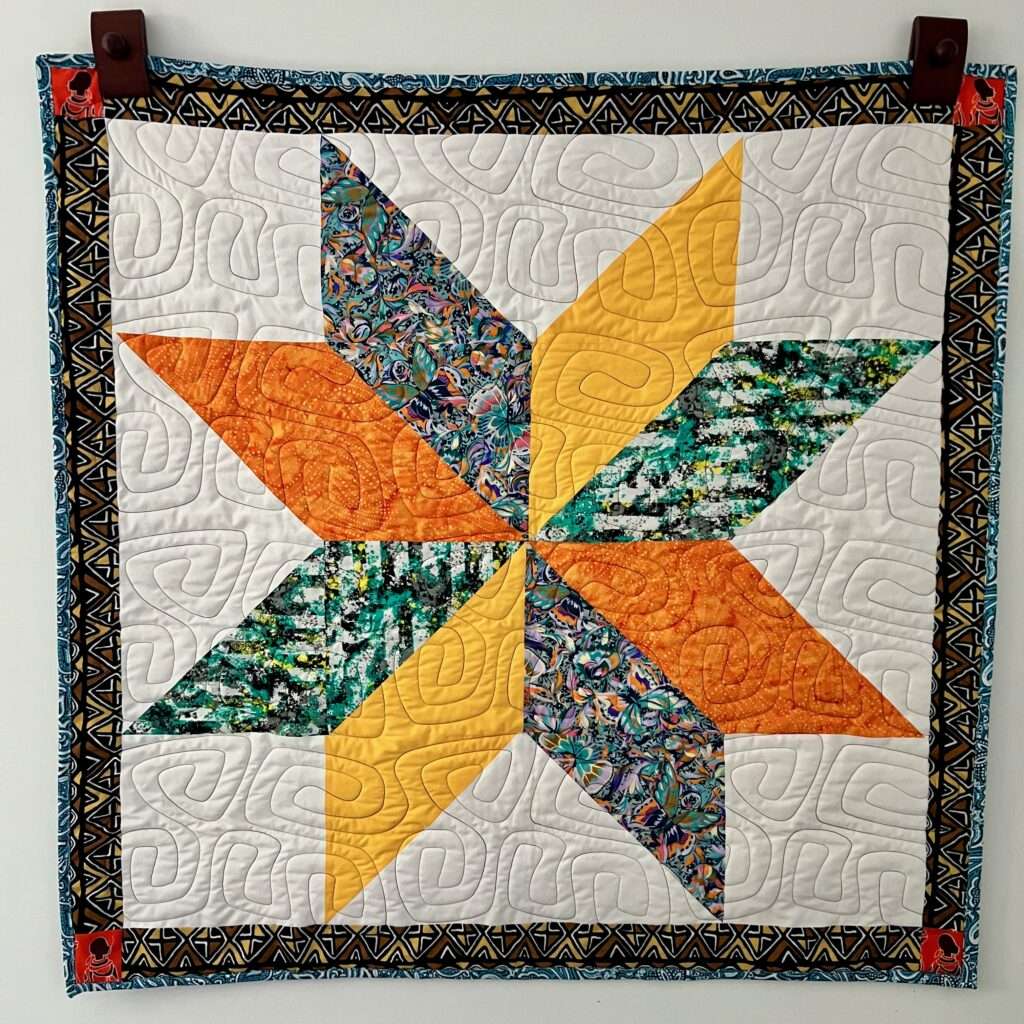This Eight Point Star Wallhanging mixes African print themes with a quilting pattern that resembles Urbano Carioca music. The inner border is made from traditional mud cloth, and the binding is made from a classic bandana print. Mud cloths and bandanas have a long history, so I thought combining the past and present in this project would be fitting.
African mudcloth, also known as Bogolanfini, is a traditional textile art form that originated in West Africa, particularly among the Bamana people of Mali. This unique and culturally rich fabric has gained international recognition for its distinctive patterns, deep cultural significance, and the intricate process involved in its creation.
History: The history of African mudcloth dates back centuries, with roots deeply embedded in the rich traditions and rituals of the Bamana people. Originally, mudcloth was created for use in religious and cultural ceremonies, serving as garments for hunters, masks, and other ceremonial objects. Over time, its popularity has expanded beyond traditional use, becoming a symbol of African identity and heritage.
Production Process: The creation of mudcloth is a labor-intensive and highly skilled process. It starts with weaving narrow strips of cotton fabric on a traditional loom. Once the base fabric is ready, it is dyed using a solution made from fermented mud, leaves, and other natural elements. Artisans meticulously hand-paint or stencil intricate geometric patterns onto the fabric using the mud mixture.
The application of mud serves both decorative and functional purposes. Not only does it impart unique patterns and designs to the cloth, but it also acts as a natural dye, making the fabric more resistant to fading and wear. The entire process is time-consuming, often taking several weeks to complete, reflecting the dedication and craftsmanship involved in mudcloth production.
Symbolism and Design: African mudcloth designs are deeply symbolic, often featuring geometric shapes, symbols, and patterns that convey specific meanings. These symbols may represent aspects of nature, spirituality, or important life events. Each mudcloth piece tells a story, making it a form of visual communication within the cultural context.
Common symbols found in mudcloth include dots, lines, circles, and animal motifs. These symbols are arranged in visually striking patterns that are not only aesthetically pleasing but also carry cultural significance. The designs are not only decorative but are a form of language, conveying messages about the wearer’s identity, social status, and beliefs.
Contemporary Influence: In recent years, African mudcloth has transcended its traditional use and has become a sought-after textile in the global fashion and interior design industries. Its bold and authentic patterns have been incorporated into clothing, accessories, and home decor items, bringing a touch of African culture to a wider audience.
As the appreciation for handmade and culturally rich products grows, African mudcloth continues to be celebrated for its uniqueness and the story it tells. Whether used as a fashion statement or a design element in interiors, mudcloth serves as a bridge between traditional African heritage and the contemporary world.
Interested in having a custom quilt made? For custom quilts or media inquiries, please see my Get in Contact page.

